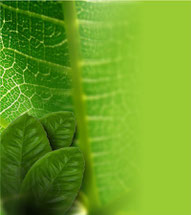Theme III.b: Micromorphological characteristics of plant drugs (vegetal drugs, herbal drugs)

Secondary meristems and meristemoids
Secondary meristems. Definition and characteristics. Vascular cambium and cork cambium (phellogen). Meristemoids, definition and characteristics.
Secondary meristems
The secondary meristems differ from primary ones in that they originate new formations from adult cells which recover the ability of dividing.
Its cellular elements resemble to primary meristems, have little intracellular space, large vacuoles and dense and abundant cytoplasm. Provide width growth to the stem and root.
The secondary meristem is located in two areas: the vascular cambium and cork cambium or phallogen.
Vascular cambium
It´s formed by a thin cell layer which is continuously dividing to increase the diameter of the stem. The growth of this tissue inwards give rise to the secondary xylem (attached to the primary xylem) and outwards to the secondary phloem (added to the inner side of the primary phloem) vascular radios are also formed by cambium.
The vascular cambium continues forming xylem and secondary phloem during the plant lifetime.
Cork cambium or phallogen
Presents radial cells in series, mainly outwards; these cells leave no intercellular spaces and altogether constitute the suber or cork.
Some trees produce a thick layer of suber, if this layer is peeled every so often, the cork cambium is destroyed, but it´s regenerated back from the bark´s living tissues producing another cork layer. In other trees cork cambium endures lifelong plant and increases with the circumference of the tree.
In most corky plants the outermost layers can not grow with increasing the circumference and break with the internal pressure. In other plants the cork cambium doesn’t produce cork but a structures called lenticels which serve to ventilate the plant.
Meristemoids
It´s formed by small meristems composed of a few cells, located inside tissues still or partially embryonic, which produce through a particularly strong division activity, differentiations as stomata, hair etc.

 Pharmacognosy´s topics - Medicinal plants
Pharmacognosy´s topics - Medicinal plants


Write a comment